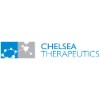
[18F]F-DOPA Imaging in Patients With Autonomic Failure
Autonomic FailurePure Autonomic Failure3 moreAlpha-synucleinopathies refer to age-related neurodegenerative and dementing disorders, characterized by the accumulation of alpha-synuclein in neurons and/or glia. The anatomical location of alpha-synuclein inclusions (Lewy Bodies) and the pattern of progressive neuronal death (e.g. caudal to rostral brainstem) give rise to distinct neurological phenotypes, including Parkinson's disease (PD), Multiple System Atrophy (MSA), Dementia with Lewy Bodies (DLB). Common to these disorders are the involvement of the central and peripheral autonomic nervous system, where Pure Autonomic Failure (PAF) is thought (a) to be restricted to the peripheral autonomic system, and (b) a clinical risk factor for the development of a central synucleinopathy, and (c) an ideal model to assess biomarkers that predict phenoconversion to PD, MSA, or DLB. Such biomarkers would aid in clinical trial inclusion criteria to ensure assessments of disease- modifying strategies to, delay, or halt, the neurodegenerative process. One of these biomarkers may be related to the neurotransmitter dopamine (DA) and related changes in the substantia nigra (SN) and brainstem. [18F]F-DOPA is a radiolabeled substrate for aromatic amino acid decarboxylase (AAADC), an enzyme involved in the production of dopamine. Use of this radiolabeled substrate in positron emission tomography (PET) may provide insight to changes in monoamine production and how they relate to specific phenoconversions in PAF patients. Overall, this study aims to identify changes in dopamine production in key regions including the SN, locus coeruleus, and brainstem to distinguish between patients with PD, MSA, and DLB, which may provide vital information to predict conversion from peripheral to central nervous system disease.

Novel Approach for the Prevention of Hypoglycemia Associated Autonomic Failure (HAAF)
Diabetes MellitusType 12 moreThe overall goal of this study is to develop a new and practical way to prevent the development of Hypoglycemia Associated Autonomic Failure (HAAF), which is unawareness of hypoglycemia (low blood sugar) in individuals with diabetes. Previous studies suggest that two medications, naloxone and diazoxide, may increase the body's ability to respond to episodes of low blood sugar and prevent the development of HAAF (or hypoglycemia unawareness). Only healthy subjects are being recruited for this study. The study has three distinct phases. In the first phase, healthy, non-diabetic individuals who are susceptible to developing HAAF are identified. Only these individuals will be studied in the second and third phases. The second phase of this study evaluates the effect of using a naloxone nasal spray versus a placebo nasal spray in improving the body's response to episodes of low blood sugar and in preventing the development of HAAF. The third phase of this study evaluates the effect of using naloxone nasal spray and diazoxide in combination, compared to naloxone nasal spray plus a placebo (for diazoxide) or diazoxide plus a placebo (for naloxone) in improving the body's response to episodes of low blood sugar and in preventing the development of HAAF.

CO2 Rebreathing in nOH: A Proof-of-Concept Pilot Study
Neurogenic Orthostatic HypotensionAutonomic FailureNeurogenic orthostatic hypotension (nOH) is a chronic condition associated with increased cardiovascular risk and reduced quality of life. On standing, patients with nOH experience a large reduction in blood pressure (BP; at least ≥20/10mmHg, but often much more), which is often accompanied by debilitating symptoms and syncope. A previous study (unpublished) showed that hypercapnia significantly increases standing BP in patients with nOH. Human bodies naturally produce and exhale CO2. Rebreathe devices offer a simple, cost-effective technology to increase arterial CO2. In brief, rebreathe devices work by capturing expired CO2, which is then re-inhaled. The net effect is a transient increase in CO2. A CO2 rebreathing device may offer a novel hemodynamic therapy for patients with nOH. This is a pilot, proof-of-concept study to evaluate a CO2 rebreather to improve blood pressure and orthostatic tolerance in patients with nOH. The hypothesis is that a rebreather will increase CO2 sufficiently enough to improve BP in patients with nOH. Male and female patients (n=28) will be asked to complete two randomized 70° head-up tilt (HUT) tests breathing either room air or using a CO2 rebreather. Hemodynamics (BP, heart rate, stroke volume, brain blood flow) and orthostatic symptoms will be assessed throughout. Breath-by-breath data will include O2, CO2, respiration rate and tidal volume. The primary outcome measure will be the magnitude of the BP response (ΔBP = HUT - Supine) during Room Air vs. Hypercapnia. The primary outcome will be compared between room air and hypercapnia using a paired t-test.

Natural History Study of Synucleinopathies
Patients With SynucleinopathiesNeurogenic Orthostatic Hypotension6 moreSynucleinopathies are a group of rare diseases associated with worsening neurological deficits and the abnormal accumulation of the protein α-synuclein in the nervous system. Onset is usually in late adulthood at age 50 or older. Usually, synucleinopathies present clinically with slowness of movement, coordination difficulties or mild cognitive impairment. Development of these features indicates that abnormal alpha-synuclein deposits have destroyed key areas of the brain involved in the control of movement or cognition. Patients with synucleinopathies and signs of CNS-deficits are frequently diagnosed with Parkinson disease (PD), dementia with Lewy bodies (DLB) or multiple system atrophy (MSA). However, accumulation of alpha-synuclein and death of nerve cells can also begin outside the brain in the autonomic nerves. In such cases, syncucleinopathies present first with symptoms of autonomic impairment (unexplained constipation, urinary difficulties, and sexual dysfunction). In rare cases, hypotension on standing (a disorder known as orthostatic hypotension) may be the only clinical finding. This "pre-motor" autonomic stage suggests that the disease process may not yet have spread to the brain. After a variable period of time, but usually within 5-years, most patients with abnormally low blood pressure on standing develop cognitive or motor abnormalities. This stepwise evolution indicates that the disease spreads from the body to the brain. Another indication of this spread is that acting out dreams (i.e., REM sleep behavior disorder, RBD) a problem that occurs when the lower part of the brain is affected, may also be the first noticeable sign of Parkinson disease. The purpose of this study is to document the clinical features and biological markers of patients with synucleinopathies and better understand how these disorders evolve over time. The study will involve following patients diagnosed with a synucleinopathy (PD/DLB and MSA) and those believed to be in the "pre-motor" stage (with isolated autonomic impairment and/or RBD). Through a careful series of follow-up visits to participating Centers, we will focus on finding biological clues that predict which patients will develop motor/cognitive problems and which ones have the resilience to keep the disease at bay preventing spread to the brain. We will also define the natural history of MSA - the most aggressive of the synucleinopathies.

Clinical Laboratory Evaluation of Chronic Autonomic Failure
Parkinson's DiseaseMultiple System Atrophy1 moreBackground: The autonomic nervous system controls automatic body functions. Researchers want to improve the tests used to diagnose autonomic failure. Orthostatic hypertension is a drop in blood pressure when a person stands up. Researchers want to focus on this sign of autonomic failure. Objective: To improve testing for conditions that cause autonomic nervous system failure. Eligibility: People ages 18 and older in one of these categories: Their blood pressure drops when they get up. They have had a heart transplant or bilateral endoscopic thoracic sympathectomies or have had or will have renal sympathetic ablation Design: All participants will be screened with: Medical history Physical exam Blood and urine tests Some participants will be screened with: Heart and breathing tests IV placement into an arm vein Tilt table testing: Participants lie on a table that tilts while an IV is used to draw their blood. Participants may stay in the hospital for up to 1 week depending on their tests. Tests may include repeats of screening tests and: Sweat testing: A drug is placed on the skin to cause sweating. Sensors on the skin measure moisture. Lumbar puncture: A needle is inserted between the bones in the back to collect fluid. MRI and PET/CT scan: Participants lie on a table that slides into a scanner. For the PET/CT, a small amount of a radioactive chemical will be injected with a small amount of a radioactive chemical. Bladder catheter placement to collect urine Skin biopsies: A punch tool removes a small skin sample. Tests to see how the pupils react to light Smelling tests Thinking and memory tests Questionnaires Participants may have a visit about 2 years later to repeat tests.

Phase 3 Clinical Effect Durability of TD-9855 for Treating Symptomatic nOH in Subjects With Primary...
Symptomatic Neurogenic Orthostatic HypotensionMSA2 moreA Phase 3, 22-week, Multi-center, Randomized Withdrawal Study of ampreloxetine in Treating Symptomatic Neurogenic Orthostatic Hypotension in Subjects with Primary Autonomic Failure

A Clinical Study of Patients With Symptomatic NOH to Assess Sustained Effects of Droxidopa Therapy...
Symptomatic Neurogenic Orthostatic HypotensionParkinson's Disease3 moreEvaluate the clinical efficacy and safety of droxidopa versus placebo over a 17 week (maximum) treatment period in patients with symptomatic NOH.

Blood Pressure Lowering Effects of Angiotensin-(1-7) in Primary Autonomic Failure
Autonomic Nervous System DisordersPure Autonomic Failure3 morePharmacologic approaches to increase levels or actions of the vasodilatory peptide angiotensin-(1-7) are currently in development for the treatment of hypertension based on findings from animal models. There are limited and contradictory clinical studies, however, and it is not clear if this peptide regulates blood pressure in humans. The purpose of this study is to better understand the cardiovascular effects angiotensin-(1-7) in human hypertension, and to examine interactions of this peptide with the autonomic nervous system. The investigators propose that the difficulties in showing angiotensin-(1-7) cardiovascular effects in previous clinical studies relates to the buffering capacity of the baroreceptor reflex to prevent changes in blood pressure. Autonomic failure provides the ideal patient population to test this hypothesis. These patients have loss of baroreflex buffering and have low levels of angiotensin-(1-7) in blood. The investigators will test if angiotensin-(1-7) infusion can lower blood pressure in patients with autonomic failure, and will determine the hemodynamic and hormonal mechanisms involved in this effect.

Phase 3 Open-Label Extension Study of TD-9855 for Treating Symptomatic nOH in Subjects With Primary...
Symptomatic Neurogenic Orthostatic HypotensionA Phase 3, multi-center, open-label study to evaluate the safety and tolerability of ampreloxetine in subjects with primary autonomic failures (MSA, PD, and PAF) and symptomatic nOH over 182 weeks.

A Clinical Study for Patients With Neurogenic Orthostatic Hypotension (NOH) Using Droxidopa
Symptomatic Neurogenic Orthostatic Hypotension (NOH)Non-diabetic Neuropathy2 moreThe purpose of this study is to see whether droxidopa is effective in treating symptoms of neurogenic orthostatic hypotension in patients with Primary Autonomic Failure (Pure Autonomic Failure, Multiple System Atrophy, Parkinson's Disease), Non-diabetic neuropathy, or Beta Hydroxylase deficiency.
